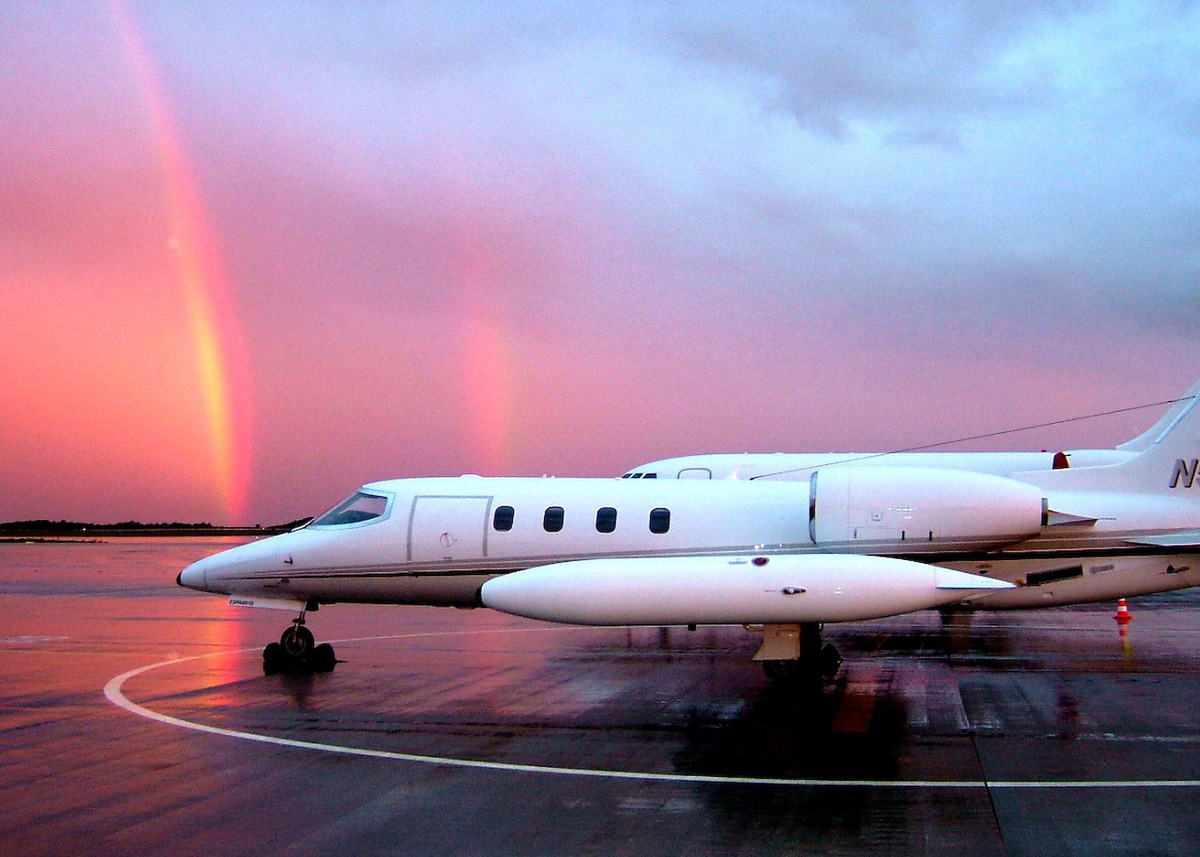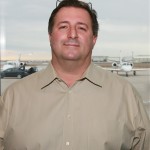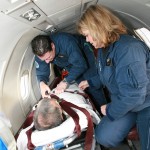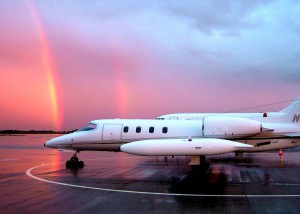
Julia Spring, flight nurse and Air Ambulance Specialists director of education, witnesses beautiful sights during her travels.
By Reggie Paulk
Imagine this scenario; you’re traveling through Africa on safari, having the time of your life. It’s the first time you’ve seen elephants and lions in their native habitats, and for you, it’s the realization of a lifelong dream. Suddenly, the driver of your Range Rover maneuvers to avoid an obstacle and the vehicle rolls. You’re thrown from the vehicle, and your legs are pinned beneath it. Luckily, other vehicles are nearby, with people to help, and you make it to a local “hospital.” Your legs are badly broken, and you need surgery. Unfortunately, the hospital isn’t equipped to provide the level of care you require, and flying home on a commercial carrier isn’t possible.
This would be a good time to call Air Ambulance Specialists Inc. AASI’s private aircraft are equipped with the medical equipment and crews necessary to transport patients, with needs ranging from basic life support to critical care. They’ll fly anywhere in the world to get their patients back home or to the facilities that will best meet their needs.
How do they provide such a high level of care? Julia Spring is the director of education and compliance for AASI. In addition to being a flight nurse, she performs new-hire training and ensures her team complies with the rigid standards set forth by the Commission on Accreditation of Medical Transport Systems.

Flight nurses Julia Spring and Mike Owens demonstrate the cozy intensive care unit of the AASI Lear 35 medical transport jet.
“Our new hires go through a week of ground school,” she says. “They’ll train for a couple of months after that, before they’re finished with orientation. We do a lot of flight physiology, because of our airborne environment.”
All nurses are required to have five years background in critical care, including emergency room and intensive care experience. Most exceed those requirements.
“Our usual applicants are ER and ICU nurses, with several years of experience,” Spring said. “Many of them have paramedic or emergency medical service backgrounds. A number of our people have flown with other programs.”
Spring is proud of Air Ambulance Specialists’ CAMTS certification.
“CAMTS reviews every aspect of our program,” she says. “From the people to the equipment—even the way the mechanics calibrate tools.”
AASI transports patients within the U.S., but much of their business comes from Americans in foreign countries who need to return home.
“We do a lot of out-of-country transports,” Spring says. “There are a lot of people traveling to the Caribbean, Mexico, Africa, Europe—everywhere. When they get injured, we bring them back.”
Picking up patients from third world countries isn’t always a simple process of loading them from ambulances. The level of care is sometimes rudimentary or nonexistent.
“When we travel to third world countries, many times, it’s like going to the scene of the accident,” says Spring. “We never know what we’re going to get. Our care is much better than you’ll get in many countries. We really need to get these patients out to a higher level of care.”
AASI’s nurses are so experienced that many times, they’re better at what they do than doctors.
“Many times, when we’re in Europe, they don’t realize how good our nurses are here in the U.S., so they’ll request and pay for a doctor to be on board,” says Tom Cox, AASI director of business development. “But they don’t have the expertise our nurses do.”
In addition to private air ambulance, AASI provides medical escort services on commercial airlines. Domestic airlines won’t allow stretchers on board, but some foreign carriers will.
“We’ll buy six or eight seats on an airliner, put a curtain around them and then put an actual stretcher on board,” Cox says. “Domestic airlines won’t let us do that.”
AASI services could possibly help save your life someday, but it comes at a cost. A medical transport to the U.S. from a country like Malaysia could cost upwards of $100,000. That is, unless you purchase travel insurance.
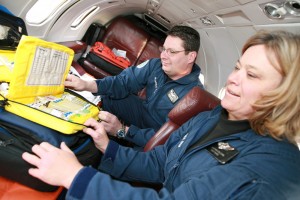
Julia Spring and Mike Owens look through the extensive medical supply kit that’s part of every medical transport.
“Travel insurance in the U.S. doesn’t have the same recognition it does in other countries,” says Don Jones, AASI president. “A European with a medical issue will have a travel insurance policy 99 percent of the time.”
The use of travel insurance in the U.S. is increasing, as well as its use as a benefit. The Platinum American Express credit card will cover air ambulance transportation. Corporations are also carefully watching travel insurance.
“We’re seeing corporations buying air ambulance policies for their employees stationed overseas,” Jones says.
What’s the outlook for companies such as AASI?
“The baby boomers are getting older,” Jones says. “They’re less averse to risk than their parents, and they’re taking trips to destinations where healthcare isn’t at a level we have here in the U.S. With their higher disposable incomes and specialty care facilities located around the country, the market is good for organizations like ours.”
For more information, visit [http://www.airambulancespecialists.com].
- AASI President Don Jones says more Americans are purchasing travel insurance.
- Julia Spring and Mike Owens demonstrate a patient transport using Tom Cox, AASI director of business development, as a “patient.”











